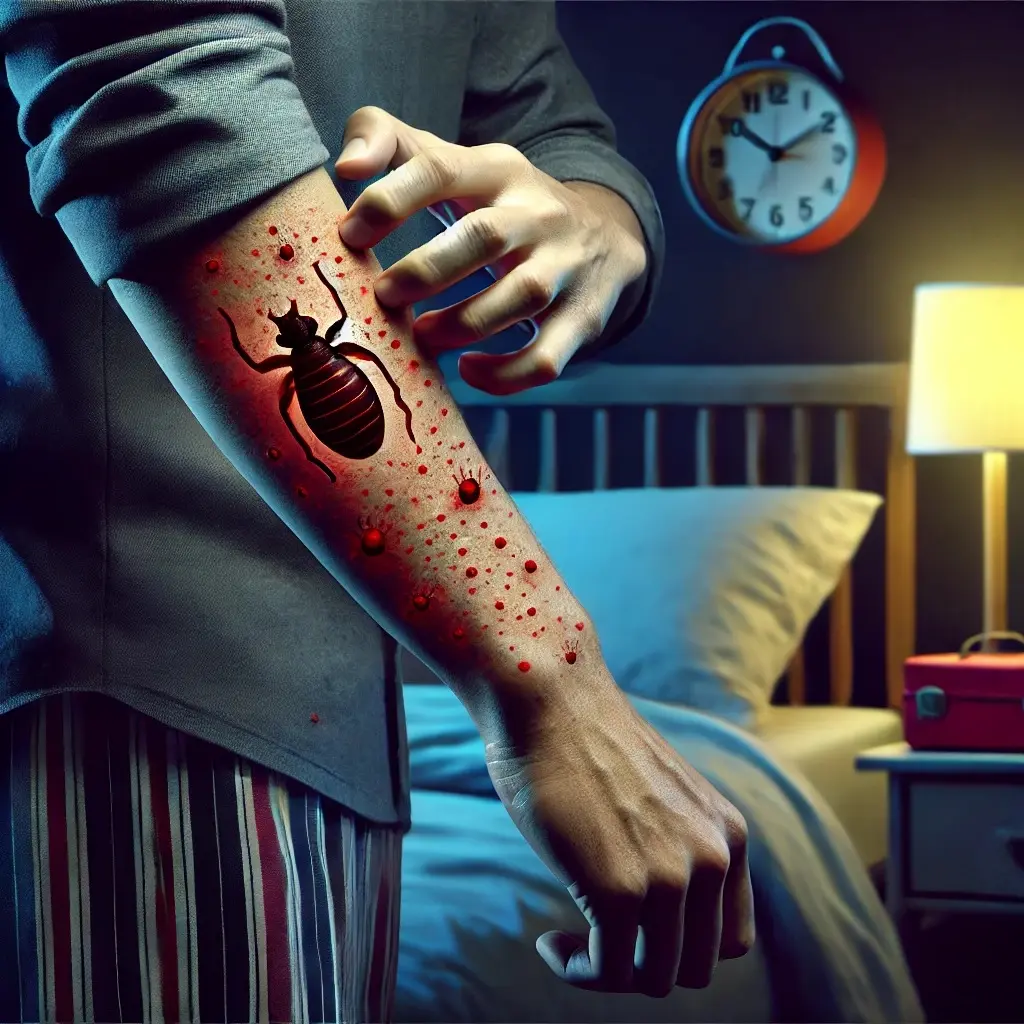If you’ve ever woken up with mysterious bites on your skin, you know how frustrating it can be to figure out what bit you. Bed bug bites can often be confused with other insect bites, but understanding their unique characteristics is the key to properly identifying them and taking action. Here, we’ll focus solely on bed bug bites and the specific signs that set them apart.
resWhat Do Bed Bug Bites Look Like?
Bed bug bites typically appear as small, red, raised bumps, very similar to mosquito or flea bites. However, there are a few key features that make them easier to identify:
- Pattern: Bed bug bites often appear in clusters or lines. A common pattern is a straight line of three or more bites, which occurs when a bed bug moves across your skin, feeding in multiple places.
- Location: These bites tend to appear on areas of skin that are exposed during sleep, such as the face, neck, arms, and legs. Mosquito bites, by contrast, tend to be more randomly distributed across the body.
- Reaction: The bites can range from mild to intensely itchy, and some people may experience swelling or redness. Unlike flea bites, which are usually limited to the lower legs and ankles, bed bug bites can occur anywhere on the body.
When and How Do Bed Bug Bites Appear?
Bed bugs are nocturnal feeders, which means their bites typically occur overnight while you’re asleep. You may not feel the bite immediately because bed bugs inject an anaesthetic into your skin that numbs the area. It’s only later, when the anaesthetic wears off, that the itching and irritation begin. The bites can take a few days to show up, making it harder to pinpoint exactly when and where you were bitten.
Do Bed Bug Bites Have a Unique Itch?
The itching from bed bug bites can be quite intense and can worsen over time. However, not everyone reacts to bed bug bites in the same way. Some people may not show any signs of bites at all, while others may have a strong allergic reaction, leading to larger, more swollen welts. If you notice a consistent, intense itch that keeps you up at night, it could be a sign that bed bugs are to blame.
Bed Bug Bite Aftermath: Longer-Lasting Marks
Unlike some insect bites that fade within a few days, bed bug bites may take longer to heal. In some cases, the bites may leave behind dark spots or scars, particularly if you scratch them excessively. If you notice bites that don’t seem to be healing after a week or so, it could be another clue that bed bugs are responsible.ponsible.

Other Signs That Point to Bed Bugs
While the bites themselves are an important sign, there are additional clues you should look for to confirm a bed bug infestation:
- Bloodstains on Sheets: Small blood spots on your bedding could be from bed bugs feeding or from accidentally crushing them during sleep.
- Fecal Spots: Look for tiny black or dark brown spots on your sheets, mattress, or furniture. These spots are bed bug droppings and can be a strong indicator of their presence.
- Shed Skins: As bed bugs grow, they shed their exoskeletons. Finding these shed skins near mattress seams or in crevices can confirm that bed bugs are the culprits.
Identifying Bites to Bite Back: Proactive Steps and Prevention
Properly identifying bed bug bites is the first step in addressing a potential infestation. Once you suspect bed bugs, it’s crucial to act fast. Regularly inspect your bedding, furniture, and sleeping areas for additional signs like bloodstains, faecal spots, or shed skin. Prevention starts with being proactive—consider using protective mattress covers, reducing clutter, and vacuuming regularly to eliminate hiding places. If you believe you have an infestation, reach out to a pest control professional like Thermopest for expert help. By understanding and identifying the signs early, you can take swift action and keep your home free from these stubborn pests.
